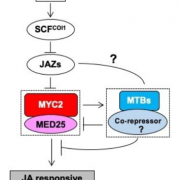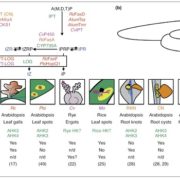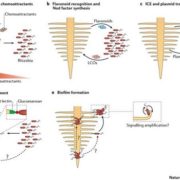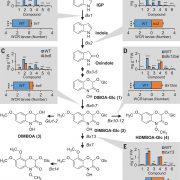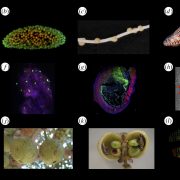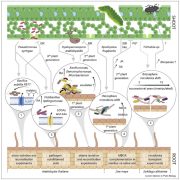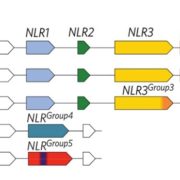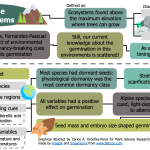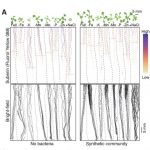Plant cell layer-specific responses against pathogenic and beneficial microbes (Cell Host & Microbe)
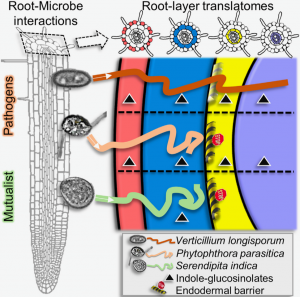 Plant roots are composed of concentric cell layers with distinct gene regulatory programs. Cell layer-specific responses are likely critical for plants to cope with microbes with various lifestyles, but little is known about root responses against microbes at cell-layer resolution. Fröschel et al. tackled this problem by conducting root cell layer-specific TRAP-seq (translating ribosome affinity purification and RNA sequencing) in Arabidopsis interacting with pathogenic and mutualistic microbes that show distinct colonization strategies. Epitope-tagged ribosomal proteins were expressed in one of three root cell layers—epidermis, cortex, or stele; ribosomal complexes were purified by immunoprecipitation, and the associated actively translated mRNAs were analyzed by RNA-seq. Upon infection with the vascular pathogen Verticillium longisporum, genes related to the formation of endodermal barriers (Casparian strip and suberin) were downregulated, associated with decreased suberin accumulation in the endodermis. The authors showed that such genes are required for limiting the growth of the vascular pathogen. Moreover, genes involved in the biosynthesis of the phytohormone ethylene and antimicrobial secondary metabolites were induced in specific cell layers by pathogenic fungi and oomycetes, but not by mutualistic fungi. This study demonstrates root cell layer-specific translatome as a powerful strategy for the mechanistic dissection of root-microbe interactions. (Summary by Tatsuya Nobori @nobolly) Cell Host & Microbe 10.1016/j.chom.2020.11.014
Plant roots are composed of concentric cell layers with distinct gene regulatory programs. Cell layer-specific responses are likely critical for plants to cope with microbes with various lifestyles, but little is known about root responses against microbes at cell-layer resolution. Fröschel et al. tackled this problem by conducting root cell layer-specific TRAP-seq (translating ribosome affinity purification and RNA sequencing) in Arabidopsis interacting with pathogenic and mutualistic microbes that show distinct colonization strategies. Epitope-tagged ribosomal proteins were expressed in one of three root cell layers—epidermis, cortex, or stele; ribosomal complexes were purified by immunoprecipitation, and the associated actively translated mRNAs were analyzed by RNA-seq. Upon infection with the vascular pathogen Verticillium longisporum, genes related to the formation of endodermal barriers (Casparian strip and suberin) were downregulated, associated with decreased suberin accumulation in the endodermis. The authors showed that such genes are required for limiting the growth of the vascular pathogen. Moreover, genes involved in the biosynthesis of the phytohormone ethylene and antimicrobial secondary metabolites were induced in specific cell layers by pathogenic fungi and oomycetes, but not by mutualistic fungi. This study demonstrates root cell layer-specific translatome as a powerful strategy for the mechanistic dissection of root-microbe interactions. (Summary by Tatsuya Nobori @nobolly) Cell Host & Microbe 10.1016/j.chom.2020.11.014


